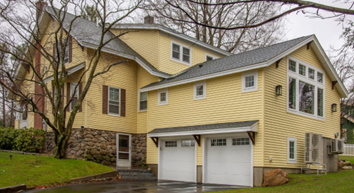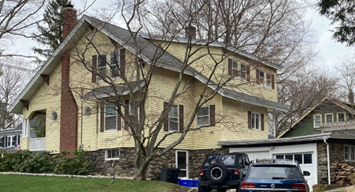Tips for Remodeling Historic Homes

Historic homes have unique challenges and space restrictions, so remodeling them can be exciting and rewarding. Before starting this process, it's important to recognize that it comes with unique challenges and considerations. Preserving the character and integrity of the original architecture while updating it to meet your needs and local code requires careful planning.
Here are a few essential tips for remodeling historic homes.
1. Research & Understand the Home's History
 Start by researching the home's history, including its architectural style, original features, and previous renovations. This may all be information you already know, but any additional information may provide valuable insight into your home's design.
Start by researching the home's history, including its architectural style, original features, and previous renovations. This may all be information you already know, but any additional information may provide valuable insight into your home's design.
Your local building department is a great resource to determine what past work has been done on the home, as they can check what permits have been pulled.
Historical societies are also a great resource in this process and will usually help you learn more about the home's history. They also have details about some of the preservation guidelines or restrictions that may apply.
2. Assess the Home's Condition
 Hire a professional inspector with experience in historic homes to assess the condition of your home's structure, foundation, roof, electrical systems, plumbing, and HVAC. If you work with a general contractor, this responsibility will likely fall on you as a homeowner.
Hire a professional inspector with experience in historic homes to assess the condition of your home's structure, foundation, roof, electrical systems, plumbing, and HVAC. If you work with a general contractor, this responsibility will likely fall on you as a homeowner.
If you work with a design/build company, they'll take care of this on your behalf.
The inspector, especially in historic towns, will likely know what problem areas to look for. However, if your town doesn't have many historic homes, it's important to pay attention to common issues like asbestos, water damage, and outdated wiring.
3. Respect Historical Integrity
Although there may be no specific rule surrounding the design of your home, it's important to keep your alterations consistent with the home's original style. Making sure the updated materials and design are similar throughout your home will help them seamlessly blend with the original aspects.
If original features are damaged or deteriorated, consider restoration before replacement. Skilled professionals can usually replicate historical details.
4. Comply With Regulations

Although your town's historical societies may know a lot about local regulations, it's important to obtain the necessary permits to make sure you're complying 100% with building codes and preservation guidelines.
This will save you future headaches if you have plans drafted that don't align with these guidelines.

This may or may not be your responsibility as a homeowner. With a design/build firm, acquiring the appropriate permits is something they'll handle. Otherwise, you'll want to ask your contractor if that's something they handle.
Expert tip: Explore potential tax incentives available for the preservation and restoration of historic properties. These can help offset some of the remodeling costs.
5. Document the Process
Keep detailed records and photographs of the remodeling process. This can be helpful for maintaining your home and for historical records.
Documenting your process can have unintended benefits. Sharing your remodeling journey online can show others how they can go about similar historic projects. It can also show you how many people are going through the complex, exciting process alongside you.
Remodeling Historic Homes With Blackdog Design/Build
Remodeling a historic home is a labor of love that balances preserving the past and accommodating modern needs. With careful planning, respect for the home's history, and the help of relevant experts, you can create a beautiful space that's functional while maintaining the history you love.
If you're considering starting a historic renovation, contact Blackdog Design/Build today.

